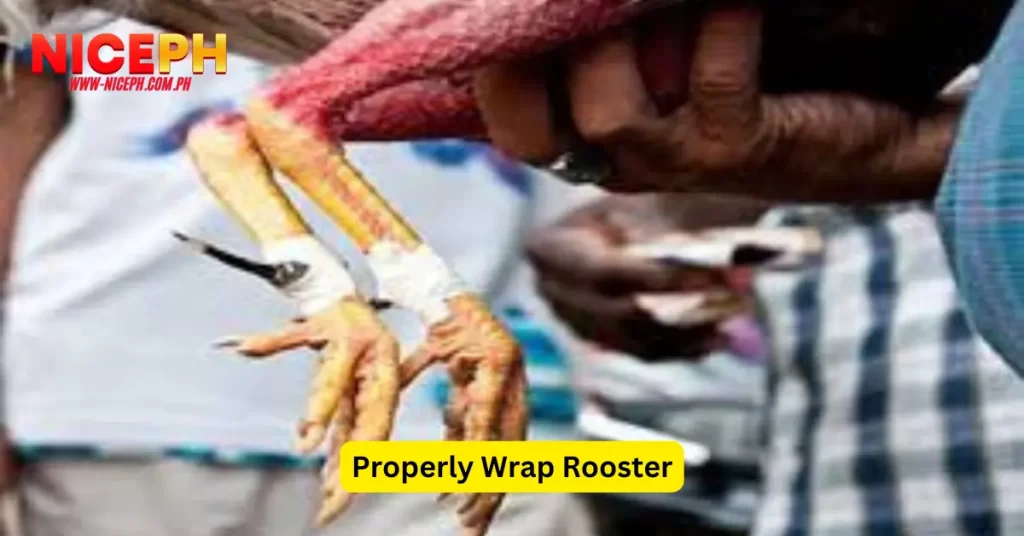Properly Wrap Rooster Spurs: A Key to Success
Wrapping rooster spurs properly is a must-known thing for a cockfight enthusiast. Doing it correctly can decide quite a bit of the win in a match. Mostly, many trainers do it wrong; therefore, in this article, NicePH will instruct you on how to wrap rooster spurs using the correct wrapping techniques every professional trainer knows best in cockfighting sports.
Why Is Proper Spur Wrapping Necessary?
Based on traditional cockfighting experience, wrap rooster spurs are essential in every match. Proper spur wrapping not only increases the rooster’s lethality but also serves as a strategic advantage, enabling it to defeat opponents swiftly and efficiently.
In simple terms, spur wrapping involves attaching an artificial spur (e.g., metal blade or round spur) onto the rooster’s natural spur. This addition enhances the bird’s combat power and the severity of its strikes during a fight.
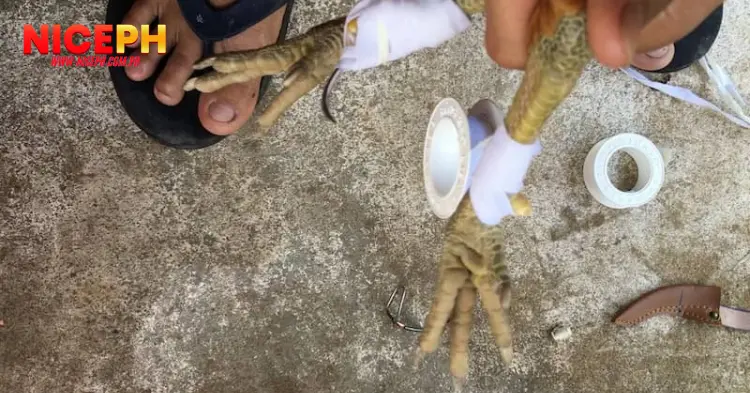
Typically, spur wrapping is applied in cockfighting matches featuring artificial spurs. These matches are known for their intensity and excitement, largely due to the use of these spurs, which add an extra layer of thrill to the game.
However, improperly wrapping spurs can backfire. Instead of enhancing performance, it can harm the rooster or even result in injuries during the match. Therefore, learning the proper method is essential.
Introduction to Common Types of Wrap Rooster Spurs
Before diving into the wrapping process, it’s important to understand the types of artificial rooster spurs and how they’re applied. Currently, there are two main types of spurs used in cockfighting: blade spurs and round spurs.
1. Blade Spurs
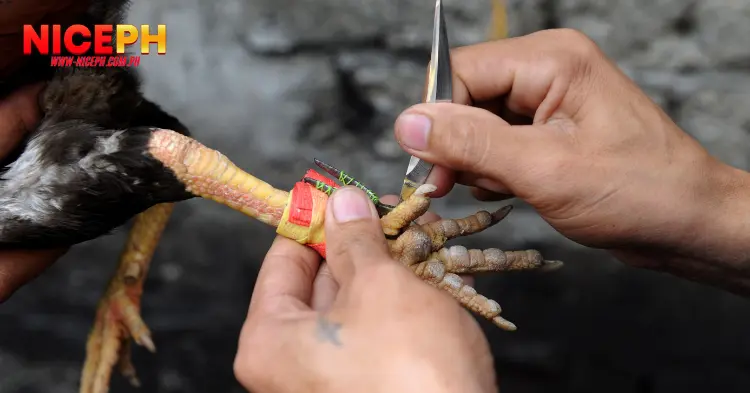
Roosters equipped with blade spurs are formidable opponents in the ring. These spurs are highly lethal, capable of inflicting severe wounds and potentially delivering fatal strikes to their adversaries.
2. Round Spurs
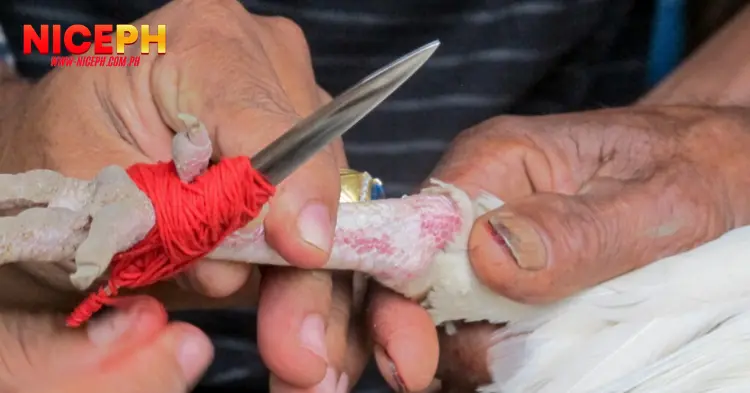
Round spurs, on the other hand, are designed to cause internal injuries. They are particularly dangerous as they target an opponent’s internal organs, making them a fearsome weapon in cockfighting.
The choice of spur depends on the type of match and the strategy employed by the trainer. However, regardless of the spur type, proper wrapping is crucial to ensure safety and effectiveness.
Step-by-Step Guide to Proper Spur Wrapping
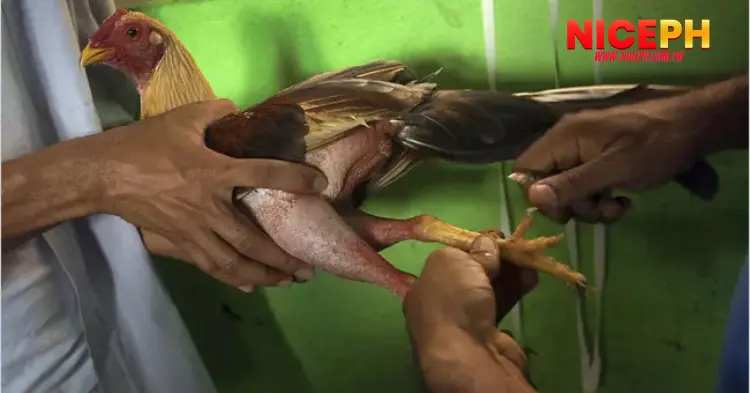
To maximize efficiency and avoid unnecessary injuries, trainers must follow the correct spur-wrapping techniques. Here is a detailed, step-by-step guide from NicePH:
Step 1: Prepare Necessary Tools
Before starting, gather the following tools:
- A pair of artificial spurs (choose spurs that match the rooster’s natural spur size).
- Strong, flexible adhesive tape with high stickiness.
- Optional items like spacers to stabilize the spur if needed.
Step 2: Position and Wrap Rooster Spurs
- Place the artificial spur on the rooster’s natural spur.
- Carefully wrap adhesive tape around the spur following this sequence: 4 rounds at the top and 2 rounds at the bottom.
- Ensure the wrapping is firm but not excessively tight to avoid discomfort or instability. Use spacers if necessary to secure the spur.
Step 3: Test for Comfort and Adjust
- After wrapping, allow the rooster to get accustomed to the new spur.
- If the rooster shows signs of discomfort or if the spur seems unstable, make immediate adjustments to avoid potential injuries during the fight.
=> Read more: Cuban Bantam Chickens – The “Strategic” Fighting Roosters
Key Tips for Better Spur Wrap Rooster
Even with proper wrapping techniques, several additional tips can enhance the performance and safety of your rooster in the ring:
1. Choose the Right Type of Spur
Selecting a spur shape and size that suits your rooster is crucial. Contrary to common belief, longer spurs don’t always guarantee victory. An ill-fitting spur can hinder performance, so prioritize compatibility and comfort for optimal results.
2. Ensure Rooster Comfort
Avoid over-tightening the wrapping, as it may cause discomfort or distract the rooster during the fight. After several matches, spurs can become dull and lose effectiveness. Make it a habit to sharpen or replace them as needed.
By following these tips and mastering the art of spur wrapping, your rooster will not only perform better but also enjoy improved safety during matches. Stay tuned to NicePH for more cockfighting insights and techniques!
=> Read more: Choosing Fighting Roosters: Revealing the Secrets
FAQs About Wrapping Spurs for Fighting Roosters
Despite having clear guidelines, new enthusiasts may still have questions that require detailed answers. Below are some common queries to help you enhance your experience and skills:
When Should Spurs Be Re-Wrapped?
In these situations, the spurs need to be re-wrapped immediately:
- After each match or whenever the rooster sustains injuries.
- If the wrapping is damaged, dirty, or becomes loose, replace it with a new one.
- If the wrapping becomes wet or dirty during use, replace it to ensure cleanliness and safety.
Is It Necessary to Use Adhesive When Wrapping Spurs?
Using adhesive when wrapping spurs is not mandatory, but it can provide added benefits:
- Adhesive helps secure the spurs more firmly, reducing the risk of them coming loose.
- It also offers protection to the area near the spur’s edge, preventing direct contact with the rooster’s skin.
=> Read more: Effective Methods to Make Healing Balms for Fighting Roosters
How to Prevent the Wrapping from Coming Loose During a Fight?
To ensure the wrapping stays intact:
- Make sure the wrapping is tight and sufficiently thick to stabilize the spurs on the blade.
- Use specialized or medical-grade tape that is soft, durable, and resistant to slipping.
- Follow the instructions detailed in Step 4 of the “Precise Spur-Wrapping Techniques” section to secure the wrapping.
How to Maintain Sharpness of the Spurs After Wrapping?
To preserve the spurs’ sharpness, follow these steps:
- Cleaning: After use, clean the spurs thoroughly and ensure they are dry.
- Storage: Store the spurs in a dry, well-ventilated area, away from moisture and humid environments.
- Protection: Avoid strong impacts or damage that might dull or break the blade.
- Sharpening: Regularly inspect and sharpen the blade to maintain its effectiveness.
=> Are you looking for a reputable and top-quality casino for betting? Try our partners: PHWIN.
Conclusion
The guide above from NicePH provides an in-depth overview of how to properly wrap rooster spurs for Cockfighting. However, the techniques may vary depending on the type of rooster being prepared. We hope this article proves helpful in assisting you to master spur-wrapping and optimizing your rooster’s performance!

